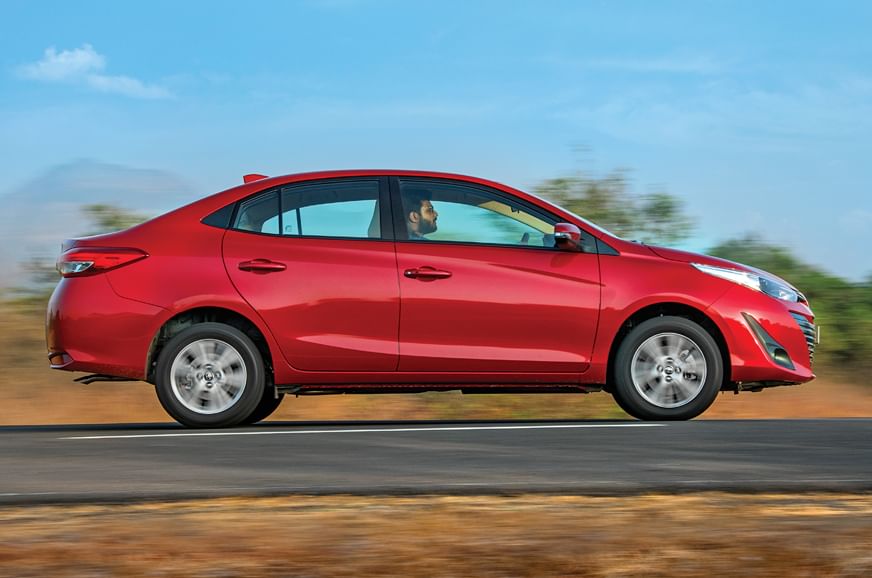2018 Toyota Yaris review, road test
Will the ever-dependable Toyota badge and class-leading safety equipment be enough to lure buyers towards this mid-size sedan, despite its premium pricing?
Published on Jun 07, 2018 06:00:00 AM
78,569 Views
The Yaris is powered by the same 2NR FE 1,496cc, four-cylinder petrol engine as the Etios, but in a heavily re-worked guise, and, as a result, power and torque have been bumped up to 107hp at 6,000rpm and 140Nm at 4,200rpm. This engine responds best to part-throttle inputs at low revs, and as a daily driver in peak traffic, it does the job in a smooth and efficient way. But if you’re ambling in higher gears and need to get through that amber light before it turns red, you will have to downshift. This is not a motor that likes to be hurried and the weak mid-range translates to a flat power delivery. Its usable power lies at higher revs, so it needs to be spun beyond 3,500rpm to get moving and complete overtaking manoeuvres quickly. There’s a prominent spike in performance at 5,800rpm, and it’s in the last 500 revs that the engine feels most aggressive, before the fuel is cut-off rather abruptly.
Toyota has given the Yaris a taller third and fourth gear, which reflects in its in-gear acceleration timings; it takes 14.74sec and 20.43sec to accelerate from 20-80kph in third and 40-100kph in fourth gear, respectively – significantly slower than the Ciaz (11.32, 16.20sec), Verna (11.71, 15.56sec) and City (12.82, 17.22sec). Even flat-out performance is quite mediocre, with the Yaris manual taking 12.39sec to accelerate to 100kph from a standstill; that’s over 2sec slower than the segment benchmark – Honda City, and slower than other rivals too. The six-speed manual gearbox is superbly smooth to use with nice and short throws; it slots in easily too. The clutch has a nice, positive bite and a short travel, which makes it easy to operate.

The seven-step CVT works very smoothly; it makes driving effortless, highlighting the relaxed nature of the engine rather well, especially when driven with a light foot. Yes, it does have the rubber-band effect associated with CVTs when you floor the accelerator. However, on most occasions and with part-throttle inputs, it shifts seamlessly and is one of the smoother automatics in this segment. There are paddleshifters too; they respond obediently and are particularly useful when you want to slow down using gearbox for ‘engine braking’.
The brake pedal is a bit too sensitive (especially in the manual); even with just a tap, it’s as if you’ve hit the pedal hard. Braking performance, however, is superb, with the ventilated discs up front and
solid discs at the rear shedding speed rapidly.
Toyota Cars
Related Images
Related Videos
Copyright (c) Autocar India. All rights reserved.


